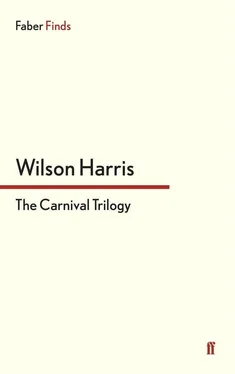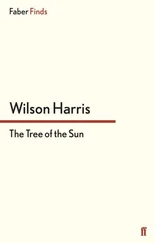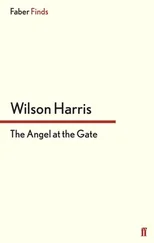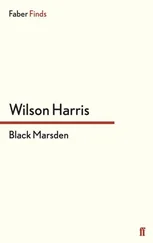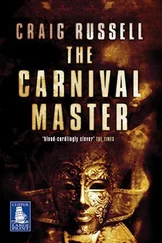*
That blaze, that fiction of fire, culled from the branch of a tree — and encompassing the origins of vision — took us back and lit the great Market-place in 1926. Sir Thomas and the marble woman arrived there around three or four o’clock in the afternoon after leaving the gate of the Alms House where they had rested for a while.
A pall of smoke hung in the air above the Market, slowly dissolving and drifting inland away from the river against which the Market square stood. I learnt from Masters that a schooner moored to the Market wharf had caught fire earlier in the day around the very hour perhaps when he had run from the false shaman. Fortunately for the wooden township of New Forest, the fire had been extinguished quite quickly. The great piles and beams of the wharf were partially blackened. The Market itself was untouched by the blaze. But the schooner had been reduced to coal-black sails and hull. I dreamt I stood upon it. It was the vessel of moderated Night. I was protected and therefore invisible to Thomas and the marble woman who were standing on the wharf. I sought to draw their attention nevertheless to the etchings that Masters’ pointed flame had drawn on the hull of Night.
One etching ran through the irregularity of the coal-black ship into an Arawak trading post that had been erected in the first decade of the sixteenth century. The Arawaks had responded to a couple of Portuguese vessels that had appeared in the New Forest river. They had felled trees to create premises that would later become the New Forest Market square. They had lit a flame there, flame-clock of an age that seemed now, as I stood on the schooner of 1926, an ancestral spike in Masters’ torch.
The Arawak flame-clock was bright as I looked back upon it. So bright I scarcely discerned additional reinforcement and blaze from Portugal and Spain. They claimed they had come to protect the alien cultures they had taken under their wings. They plundered, they raped, and yet a glimmering fiction of mutual desire for protective law, protective spirit, left its initial nebulous score on the vessel of Night on which I now stood long after the circumnavigation of the globe.
I sought therefore to trace with Masters’ torch the blackened initials of god, of fiction-globe, fiction-law, within a collision of cultures. I sought to trace an initial unity of Mankind that was so nebulous it ran through every timepiece of frozen fire one wore on one’s wrist (as on the broken body of generations) within fragmented conventions and treaties, false clarities, false economic ideals.
It was this nebulosity of initial grace that deepened the fire in my eyes. I needed to descend with the vessel of Night into accompanying initials of the mastery of the globe, master-builder, master-philosopher, master-salesman, master of arts. I needed to descend with the schooner of Night into equally related initials of the servant of the globe, servant-builder, servant-philosopher, servant of arts. How creatively interchangeable were they — mastery and service — upon the unborn/born person in the Carnival body of space? I needed to descend into eclipsed initials of the rebirth of spirit within Masters and Thomas and Alice and the marble woman and numerous others. We were partial figures on the deck of Night. Such partial figuration of soul was a signal of terrifying wholeness. Terrifying in an age that had settled for fragmentation, for polarization, as the basis of security.
In confessing to such partiality and terrifying comedy of wholeness, I sensed the protective veil of which Masters had spoken. I looked through the blackened fire into the ships the Arawaks had seen. Night fell in consistency with the ship of Night moored to the Market-place of the globe. The Spanish came in that Night, then the French, then the Dutch, then the English, then the Americans, and in 1926 — on the very dream-day, dream-night, of the burning schooner and the capsized basket of eggs — a Russian vessel appeared and anchored in New Forest mid-river. It confirmed Flatfoot Johnny’s claim to be czar of Carnival. But the Russian czar was dead and a generation at least was to pass for him to be resurrected in embalmed Lenin.
In 1926, the Market Carnival, over which Johnny presided, had been untouched by the day’s fire, but something incalculable — a cosmic wind perhaps that had been blowing for ages upon savage heart, savage treaty, savage trade — gave to its iron railings and skeletal arches, its wooden frames and stalls, the proportions of a twin or cousin to the vessel of Night. The Market seemed, therefore, equally gutted, equally afloat in space. The czar Johnny was proceeding with an enormous bag aloft on his shoulders. He was a man of prodigious strength, grotesquely muscular, grotesquely powerful. His prime defect was an awkwardness of pace, so awkward it made him seem old and crippled as he shuffled along. And then of course one saw his muscles and his back that seemed peculiarly incongruous then, incongruous youth cemented upon incongruous age.
His awkward foot was the gift of the false shaman. It fired his ambition to balance the globe upon his head. His great muscular proclivity, his capacity to lift a crate or a barrel of sugar, was a trick of innate deformity. Imagine then, gentle reader, how chastening and astonishing it was to perceive, in Flatfoot, the czar of New Forest, the shadow of Masters!
Masters’ escape from the false shaman, his fleet foot, gave an astonishing twist to Flatfoot Johnny’s predicament in being caught and lamed on the foreshore.
Masters and czar Johnny together — in shadowplay cosmic essence — were an irregular portrait of age-old and ageing collectives whose gross or refined ambitions to manhandle the cosmos turn from the prospect of conquest on the battlefield, or conquest in industry, to nursing the spectre of vicarious athletics in space, Carnival Olympic Rocket Games.
Masters smiled as if I had caught him out, caught his immersion in brutal yet philosophic reverie. It gave him no pleasure to confess to his kinship to Johnny save that such confession reopened the wound of diseased Ambition in which age is cemented to cosmetic youth or grotesque muscle. The powers of the lame are added to the fleet of spirit, as a parable of the partial nature of all human achievement, and human institution, all bodies, all images. I sensed he was as embarrassed and chastened as I, and this made me listen to him all the more closely and sympathetically.
“In confessing to partial images,” he said so softly I had to ask him to speak up, “we come abreast of both bias (the bias of ageing institution) and potential (the capacity within all of us to be born anew) in all regimes and civilizations. All images are partial but may masquerade for an age as absolute or sovereign. Take the Market-place to which you have returned like a ghost from the future. As absolute or sovereign image ,the Market beguiles us into overlooking the terrors associated with it over the centuries. We tend to see in it the ground of honest trade, honest money — in our time — honest competition between individuals who are innocent of all that has happened.
“As partial image , however, the Market suddenly assaults us. It is brightest when it is darkest fellowship of greed. It is a net in which peoples and species have been decimated. We grow fat with our greedy antecedents, thin with our decimated antecedents. They inflate us to spawn them and their miseries and their grandeurs all over again.
“I tell you, my friend, much subtlety and true honesty are needed in the ‘reading’ of partial images. For the partial image — in confessing to the ground of bias in sovereign institution — appears to terrorize us, or to confuse us, though it has begun, in some degree, to free us from the absolutes that clothe our memory and to reveal a potential that has always been there for mutual rebirth within conflicting, dying, hollow generations.
Читать дальше
